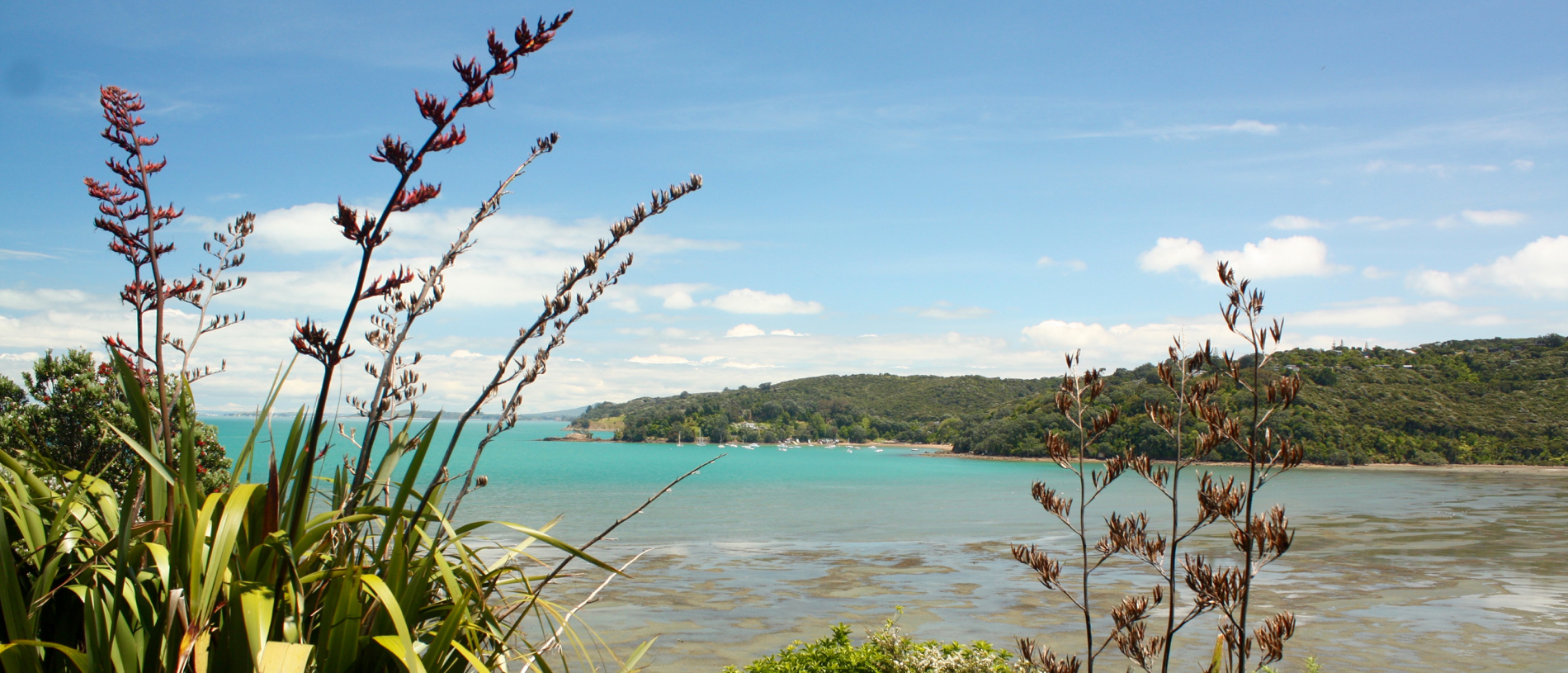
Loved by the locals: Waiheke Island
Do what the locals do on Waiheke Island.
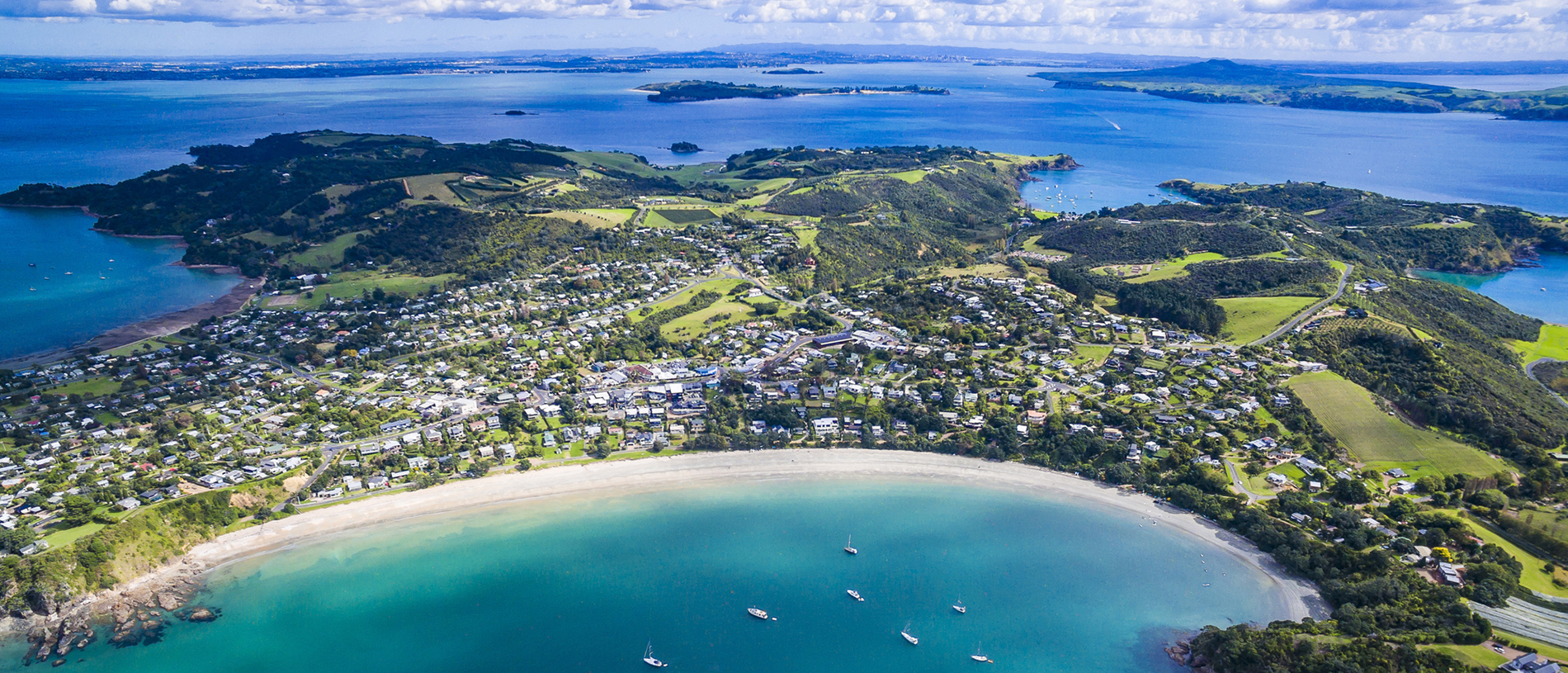
Some people were terribly excited when Lonely Planet named Waiheke Island as the fifth-best holiday destination in the world.
Café owners, restaurateurs, vineyards, tourist bus operators, accommodation people and every shopkeeper who could sell so much as a straw hat, knelt down and felt the sun.
I lived on Waiheke Island and didn’t much care.
The peace of the island, the fun of the place, the strength of its community, were more important. But in a place as beautiful as this one, they had to be fought for.
Developers had wanted to build a marina in Matiatia, where the ferries berthed. The idea didn’t fit well on an island where small boats lazed on moorings. The community spent $430,000 batting the idea away. Another proposal immediately took its place, growing back like a flatworm’s severed head. That was what being fifth in the world meant. Beauty was a business opportunity. Everyone wanted a piece of it.
When I first visited Waiheke many years before, it just seemed small and hemmed in. I was from the South Island, where things were neither small nor hemmed in. I loved its mountains and its big skies, and its loneliness, and had a South Islander’s distaste for the north.
I felt trapped on the island and thought the people smug.
Thirty years on, one of my friends from those days still lived on the island, and no one felt smug, for the world had intruded.
Once my family spent our time in Golden Bay and Christchurch. Life was wonderful. Then floods wrecked our Golden Bay home. Earthquakes ruined our city. We decided after 10,000 of them we’d served our time and could move north with clear consciences.
Our twin sons lived in Auckland with their families. Their friends were dubious. Disasters seemed to follow us, they said. We settled on Waiheke Island. Two months later we had two earthquakes. See, they said.
Waiheke Island was a good choice. Its pace of life, its island-ness, its eccentricities, its accepting nature. Easy to get onto, and off. If you’d had enough of the city, it was easy to produce a ferry timetable, look at your watch, and announce, ‘My god, is that the time... ?’
Then drift away over the blue Gulf, along with relieved commuters, holiday-makers, Gold-Carders getting a return on old age, and frantic wedding parties of young women wearing tutus and fascinators, throwing back stubbies of pinot gris and always hoping to beat the odds against the Big Day being the happiest of somebody’s life.
I lived on the island still and had grown to love its peculiarities.
Here you did not curse other drivers, out loud at least, nor honk your horn at them.
I was showing a city visitor around the island once when a car pulled out from a side road right in front of us. Both cars were going scarcely faster than a walking pace, and there was no danger. My passenger leaned over, beeped the horn and yelled out of the window. The poor man looked both apologetic and hapless, and I hoped I was looking like that too.
You did not speed. Most of the island’s roads were limited to 50 kilometres per hour. The speed on the Onetangi straight, the island’s longest, was raised to 60 kilometres per hour, and the top speed, way out in the country was 80.
Few locked their cars. What would a car thief do? To steal a car on an island you needed to get it off, and there was only one escape route.
Once, when a car was stolen from a rather vulnerable woman and wrecked, people, including the thieves, clubbed together to buy her a new one.
I was stunned to read a real estate advertisement for a house in a ‘gated community’. In God's name, why? Many didn’t bother locking their houses either.
I went to the street leading to an expensive subdivision of houses. The gate stood at the end of it and yes, it was locked. But a public walkway ran beside the gate. You could simply walk around it.
Here, locals argued over whether a sign painted on a concrete wall constituted graffti. The sign said: ‘All you need is love.’
Very little crime bothered Waiheke. The weekly police reports published in the island newspapers told of a gentle community.
A typical week might produce a brief list of youthful yahooing, drunken driving and the occasional break-in, usually with official exhortations for the community to be more security-minded. The community didn’t think so. In the statistically unlikely event of a robbery, it was a small price to pay for freedom from fear.
Islands had natural defences: very large moats. At the Waiheke ferry wharf, a noticeboard published photographs of undesirables: ‘Not to come to Waiheke.’
But why an island at all? That, really, was the question behind every island resident.
People chose to live on islands for all sorts of reasons. A defined domain. Plenty of sea. A simpler life. Commonly, a sense of freedom, which was surprising, because you were confined in a much smaller land.
For me, when the ferry set out over the sea, threaded its way through other islands with the Auckland lights merging with the sunset behind, I simply thought the world beautiful and the island a dream.
‘Waiheke’s bohemian and hippie past,’ Lonely Planet declared, ‘is not far from the surface. The island continues to have a thriving artistic community.’
But was it true?
Tanya Batt was every magazine writer’s idea of Waiheke.
She looked like a flower on a bike. No, the whole posy. She lived in a community, an eco-village of 15 homes, in a house she built herself, mostly.
She spent her flrst night there on a mattress on the concrete floor under a tin roof and when she woke up in the morning there was a horse outside the window. In her mind, it was a white horse. Like a unicorn in her garden. Its owner reckoned it wasn’t white, it was dappled, but Tanya had seen its soul.
She made a living as a storyteller. Of course.
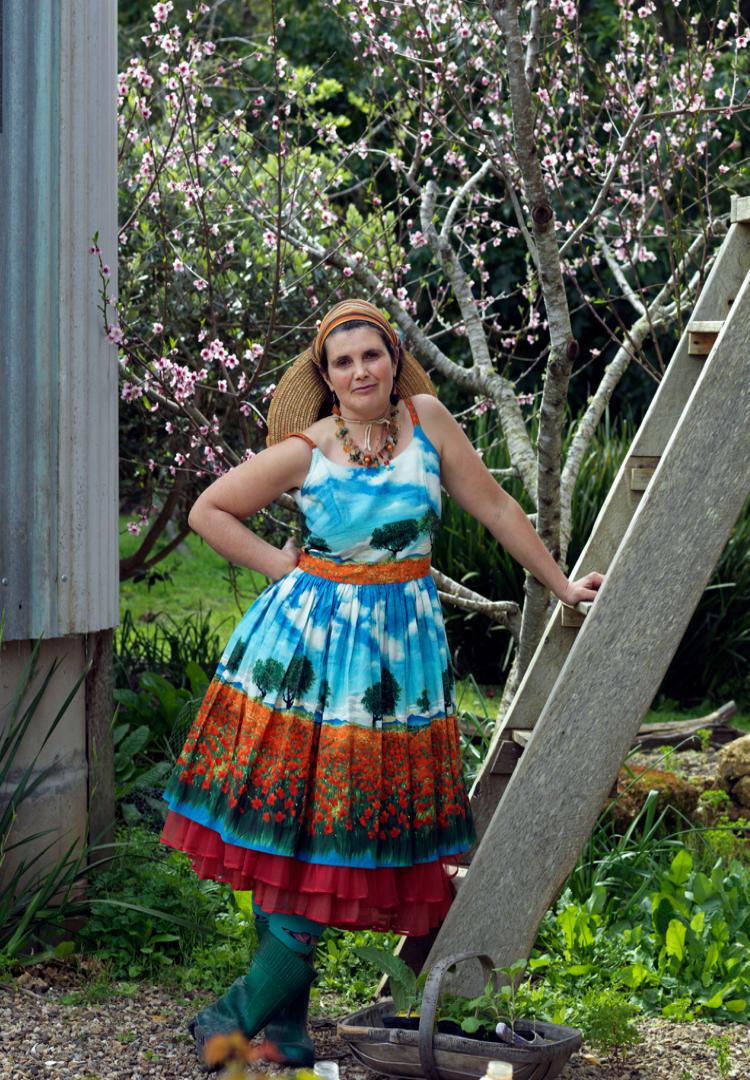
When I met her she was working on the subject of islands. She was part of a charitable trust, Once Upon an Island, setting out to create a network of island communities based on stories, and she was getting ready to go to Norfolk on an island-to-island exchange.
‘I love islands,’ she said. ‘Wherever I go in the world I seek them out. I have a theory that we have the opportunity to resolve all kinds of social and ecological issues on islands. We feel them first because of our limited resources and our finiteness. It’s one of the things I love about living on Waiheke, the parameters of it. I can feel the edge of where we live.
‘Some people don’t like that. They feel claustrophobic. I like the idea that no one else can reach me. I like that about islands, the distinct isolation you get. They’re their own little kingdoms, queendoms.’
She said things about living on her island which seemed to me to be true. The quite rare feeling of wanting to be at home, instead of being somewhere else and dreaming of it.
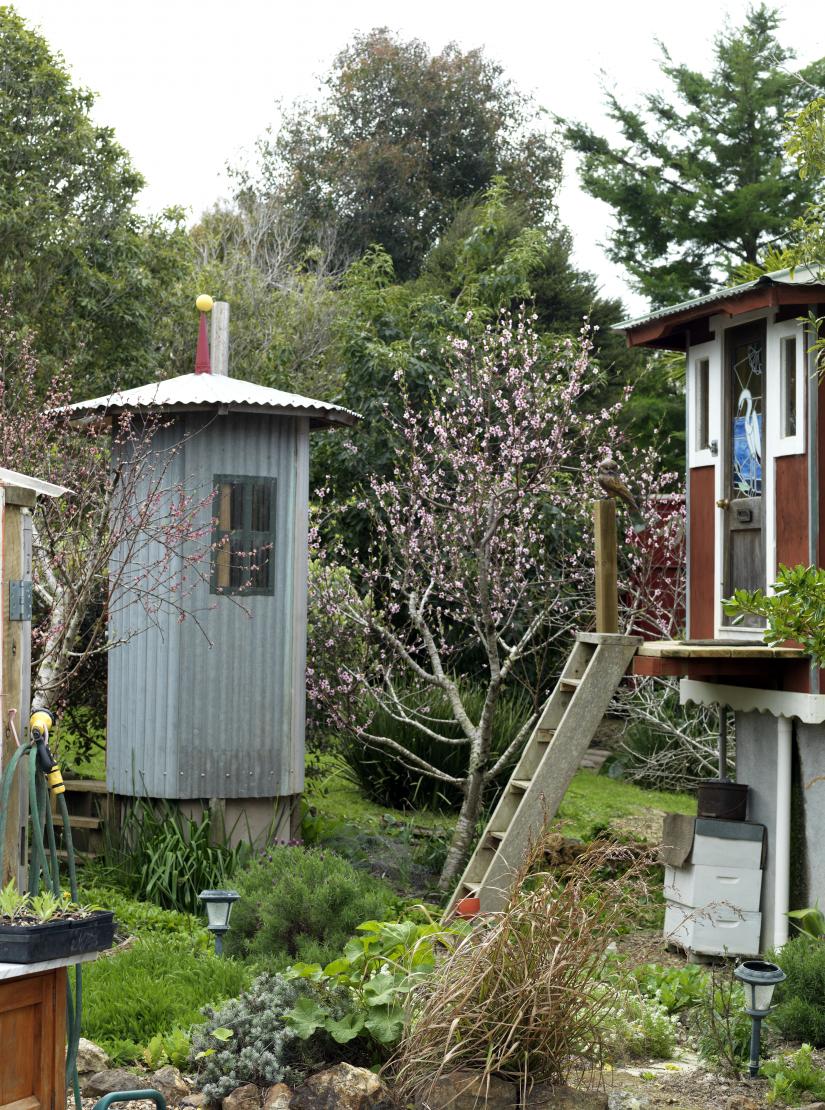
She lived simply, her little house beside a huge vegetable garden dotted with fruit trees, a Garden of Eden without snakes. It gave off a strange, half-remembered sound which after a while I recognised: lots of bees.
Here, she had to grow her own food, build her own shelter. A minaret housed her composting lavatory. A half-built mud-brick house stood on the section next door. A cold wind sneaked in from the south, a thief in the light. She put down a plate of fat walnut brownies. ‘I think of myself as a storyteller. It feeds me and puts a roof over my head.’
Quite a nice little roof too, starting with a simple structure like a farm shed and slowly growing into a fairy’s home. Its colours struck me between the eyes. Blues yellows purples greens reds and everything in between. It was an Aladdin’s cave of mermaids, fairies, mediaeval queens, antique operatic costumes. She put them on for storytelling sessions, hopped on her electric bike and danced over the hills.
Visitors disembarked from the ferries at Matiatia and were driven into Oneroa township by the world’s most patient bus drivers. The first proper building they saw was the Waiheke Library. It was right on the leading edge of town, the finest public building in all Waiheke.
The building showed that someone in the drab city council offices in central Auckland had style.
As you approached, the library waved like a woodland in a gentle breeze, flickering in the light. The essence of Waiheke was carved into its curving wood: ‘Lots of rain, lots of sun, lots of wind, lots of day, lots of night.’
Designed and crafted by Kazu Nakagawa, who carved the letters into the wood, one a day.
He’d been a boy in Japan who lived by the ocean and started designing windsurfers. The fibreglass and resin made him sick so he moved on to something more natural: wood.
He began making furniture in a place near Yokohama. His chairs didn’t always quite work: too small and too fragile, he said. One was still in his workshop, beautiful, uncomfortable.
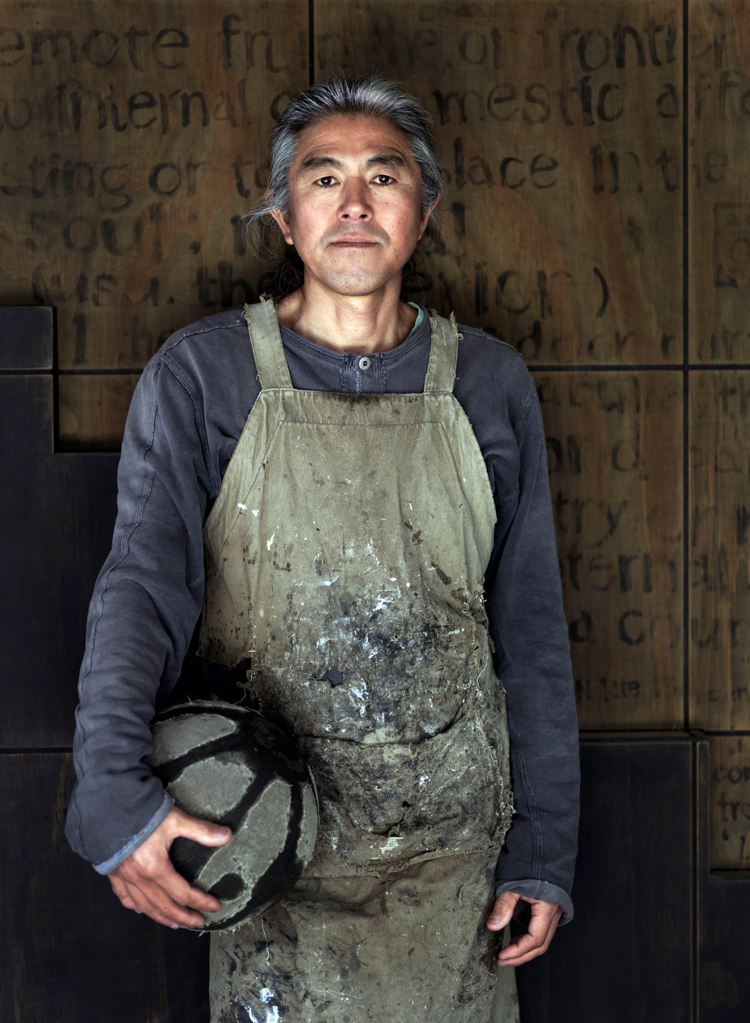
Then he came to New Zealand with his former wife, first stop in a world tour which never happened. He got as far as Waiheke and stayed. Someone thought he might fit on the island. That was 1988. He applied for permanent residence and eventually got it. ‘In Japan, I saw people, cars, buildings, and that’s how I grew up. This is completely different. Everything is so exposed. I see lots of sun. I feel lots of wind, and rain.’ Lots of day, lots of night and so on.
Was he an artist? Mmmmm. He was hesitant. In Japan, people respected artists so much, separated them from ordinary people. He was wary of the term here. On Waiheke, a lot of people had hobbies and called them art. The word didn’t have the same gravitas.
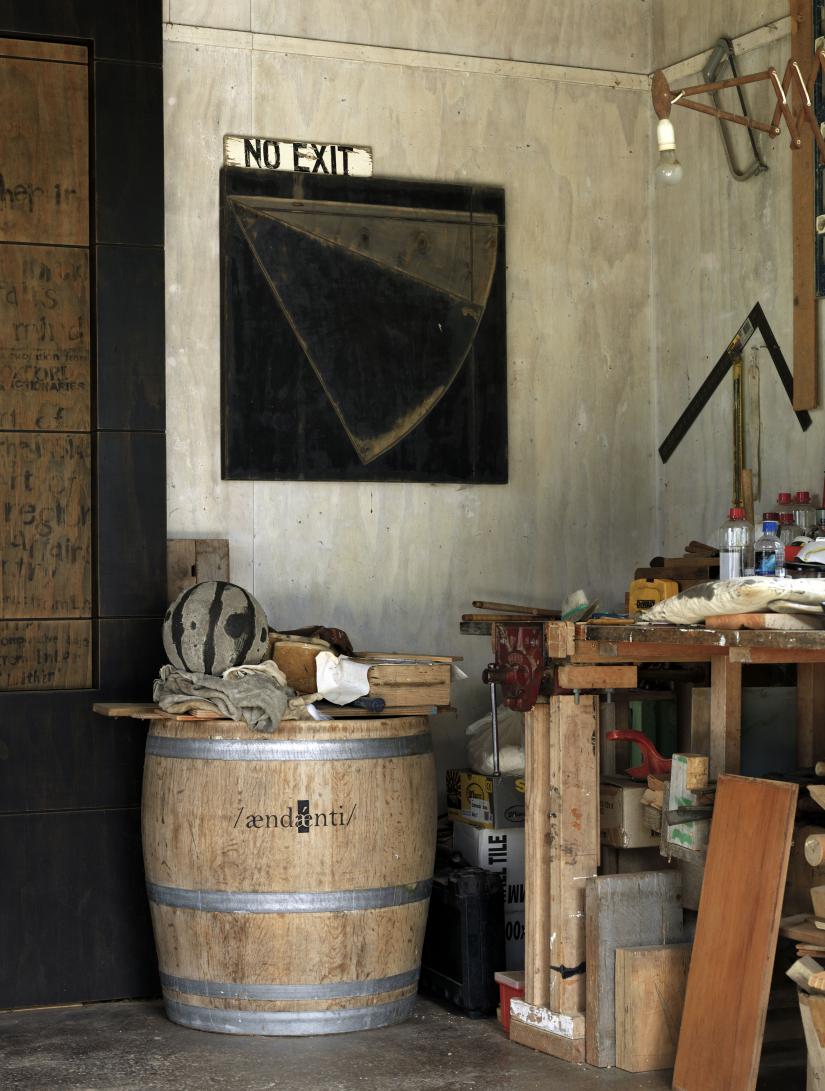
His house stood in a garden of kānuka, ponga, lemons, a big tōtara, a simple wooden building that somehow contrived to be... different, coloured glass and small frames like a child’s drawing.
The house, he said, was half-owned by the bank, an enviable average. But yes, he was just about making a living.
I’d seen his work first on one of Waiheke’s biennial ‘Sculpture in the Gulf’ headland exhibitions. He’d built a catwalk jutting out from a cliff. People dressed in black and white clothes, all made from other clothes, an assemblage of others’ lives, a patchwork of the past. Then they walked out into space along the catwalk. It was a transforming experience.
The black and white clothes were created by Rose McLeod, a textile artist.
Rose was a celebrated artist, but not a thriving one.
She and her husband, a potter, and her son came to Waiheke in 1978. She travelled from Auckland on the Iris Moana, an old Navy Fairmile launch converted to a ferry, and the journey took an hour and a half, sometimes two hours. There weren’t many day-trippers, then.
She was creative. She’d worked in film and with the Mercury Theatre.
‘The island was very empty, hippy-dippy. We didn’t have any money. It was lovely but very hard to make a living so we moved back to the mainland after a year.
‘I married a man who didn’t think income was important, back then. That marriage did five years. Then I came back to the island for another period. I was doing art, making quilts, doing fabric work. We all do some things in our lives we’d rather forget about. I was a little wild. It was adventurous and fun. I’m glad I did it but I’m glad it’s over.’
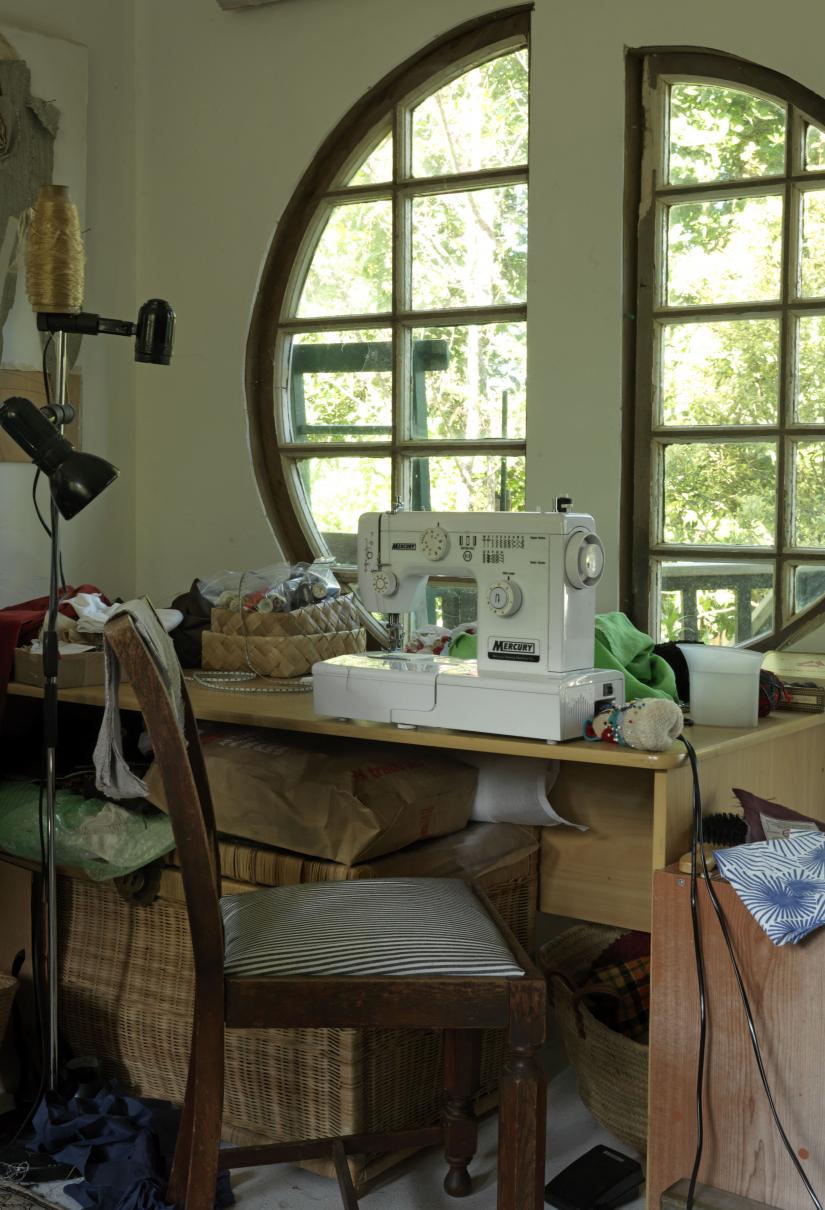
Rose had owned several homes, at Palm Beach, and down the island near Orapiu. She fixed up an old fishing hut there and built a studio. Amazing gardens, beautiful.
‘I was doing bits and pieces, wedding flowers, exhibiting, piecemeal. Barely making a living. I lived very simply.’
She moved back nearer to town, Oneroa, now lived in a pretty old house with a studio, but she couldn’t afford to stay. She’d been hoping for a stroke of good luck or good fortune. She got neither.
Rose was leaving. She was not alone, she said, in being pushed off the island. She talked of other artists. They could no longer afford to live here. Waiheke was simply too expensive, falling victim to its own fame.
Waiheke was slightly warmer and a bit drier than Auckland.
No one was quite certain what the name meant. The most common guess was ‘cascading waters’, although the only falling waters on the island were the Cascades, hardly more than a trickle. Most thought of the name as a mistake.
This was the third most crowded island in New Zealand after the North and South Islands.
Seasons worked on the island like a bellows. Around 8500 people were thought to live there permanently, blowing out to several times that number in high summer.
The people on this island were whiter than Auckland, older but poorer. That was according to Census figures, although the poorer bit was open to conjecture. Were all of those mansions squatting in their bays a façade?
Someone had bought a disgraced financier’s palace in a bay whose palms could be seen peeking when you were standing on Palm Beach but was otherwise private. The new owners didn’t like the manor, so they did the logical thing: they burned it down.
I’d like to have reported that the financier’s victims joined hands and danced around the flames.
But the bay was exclusive, all right. A few boaties watched from their vessels, a few people from the hillside. Perhaps people were torn: the palace of the damned going up in flames (cheers) versus the waste (groans). Otherwise, it was, like so many things that end in fire, just an end. For the moneyed, it had a cold hard logic.
But why weren’t these people pushing the average income statistics sky-high? For two reasons, probably. First, because their numbers didn’t fit the space they occupied. Or rather, they fitted very loosely. They took up a lot of ground but there really weren’t all that many of them. Secondly, because most did not spend very much time on the island, and probably weren’t there on Census night, when a third of all houses on Waiheke were unoccupied.
Many of the island’s houses were holiday homes. Beachfront settlements in winter looked barren as their Japanese maples. At night they were swathes of black. Waiheke was as susceptible to property myths as its big-city neighbour, but one of them was certainly true: in the previous year, it had become much more expensive to buy a house.
Where did this leave those bohemians and hippies who, according to Lonely Planet, were the reason for so many people nipping over the water? The island paradise was busily pricing them out of the market.
Two communities of houseboats lived a precarious existence on the island, dodging bureaucrats intent on running a standard rule over the way people lived, laying down plans like shrouds.
One of them survived in the Bay of Lost Dreams, alias the Causeway.
Until the Causeway was built, getting from the western end of the island to the east was a lengthy, winding undertaking. The Causeway ran over a swampy inlet almost severing one part of the island from the rest. The new road created a bay which dried at low tide and became a resting place for old and eccentric boats. They perched and lurched all over the bay, pretty, crafty, some like waterborne caravans, some reeking of northern traditions, some of ages long gone, a polyglot collection of satisfying vessels.
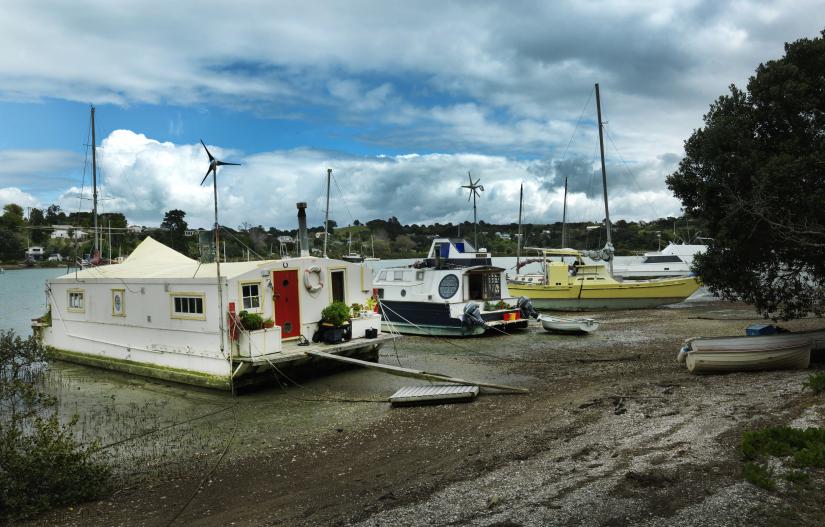
Its many supporters reckoned that old boats needed a place to die. Alas, under the officials’ beady eyes they were tidied up, and some disappeared. But enough remained to make up a maritime museum of their own.
Among them were houseboats, and on two of them lived Steve Martin, Mary Christie and families.
They met as conservation volunteers, did good work, looked for somewhere to live, but even then found Waiheke too expensive.
Then they saw an open fishing boat lying near the Causeway. ‘I could do wonders with that,’ Steve thought, and he did. Mary borrowed the money, and they built a cabin on the boat with enough bedrooms for themselves and four children, two boys and two girls.
People called it the Tardis.
They went around the Gulf in it. It could still move. Later, Mary moved onto a boat near it, the nucleus of a fleet.
But the island was changing.
Steve said: ‘New money has come from overseas, bought houses here. We believe a handful of these people are the ones who don’t want us down here so they’ve been to the council to force everyone out.’
Mary: ‘I think there are people out there who don’t like us. We’ve had a lot of issues; in Anzac Bay [the next bay over] the houseboat community there had people complain they were spoiling the view. Whereas we’ve always believed we are the postcard.’
So they were. When I first moved to the island tourist brochures boasted of them.
They appeared in every television and film documentary made about the island.
Well, the houseboats had survived the purge, so far, although bureaucrats buzzed around them like wasps. Many, like me, hoped they would live on as an antidote to the suburban life that greyed even a paradise like this one. Listening to Bach on a quiet evening as Mary practised her violin had an amenity value that should have found its way into the district plan.
The sea here was so usable. You could sail on it, swim in it, fish it, live on it and most of all, love it.
We lived in Onetangi, walked, swam in the warm sea and looked over the Gulf to the islands. Looking was my main recreation. I was very good at it.
One evening we went to Palm Beach for a nude swim. The evening was hot, the clothes-optional end of the beach crowded. We walked back through black rock still pumping out the day’s heat, went down the opposite end for some of Palm Beach’s excellent fish and chips. Beside us a big group of Argentinians were using the community barbecue, grilling something that smelled delicious.
French was the second most-spoken language on the island, followed by Māori, German and Spanish in that order. Every summer Argentinians working in the vineyards and cafés filled the island with life and colour.
But the language coming from the single public toilet was robustly Anglo-Saxon.
A woman was locked in. The electronically operated door would not let her out. Her calls for help had an undertone of desperation.
Several people gathered outside, tugging at the door, trying to be soothing. I called the city council. Yes, they could call a technician, but he might be some time.
Maybe even tomorrow.
Everyone agreed we needed tools. Modern Japanese cars didn’t have any. The woman in the toilet wanted to know where her husband was. He should have been in the fish and chip shop, she said.
I went down to the fish and chip shop. Her husband wasn’t there.
But a woman was holding a sheep on a lead while she asked people to sign a petition objecting to roadworks. The sheep looked interested.
Sure, she said, she had a screwdriver. She opened the back of her car. Inside was a box, the kind I imagined hauled gold bullion. Certainly, it was heavy enough.
It held tools for every occasion. Dozens of them. Hundreds perhaps. She had to go home, she said. I should take the box, then leave it with Peter in the fish and chip shop. She pushed the sheep into her car and shoved off.
I wrestled the box back down the track to the toilet. Several helpers then attacked the door with a fine selection of screwdrivers, crowbars, spanners. It wouldn’t budge.
A smallish man strode up the path. He announced himself as the missing husband. He called to the woman inside. She told him she was stuck. He watched the action for a moment then seized the door handle. To everyone’s astonishment, the door swung open. The woman flew out. The husband puffed with triumph. Off they went.
I lunked the toolbox back to the fish and chip shop, which was full of people, and told Peter he was to be the guardian of the sheep woman’s toolbox. He didn’t so much as look surprised.
Ah yes, Lonely Planet. This, to me, was the real Waiheke.